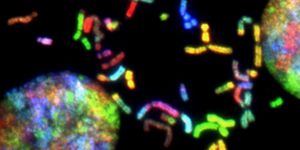Active Volcanoes Discovered on Venus
New research has identified 37 volcanic structures on Venus that are thought to have been active recently. The findings, which suggest that geologic activity is still happening on the planet, were reported in Nature Geoscience by an international team of researchers.
"This is the first time we are able to point to specific structures and say 'Look, this is not an ancient volcano but one that is active today, dormant perhaps, but not dead,'" said study co-author Laurent Montési, a professor of geology at the University of Maryland. "This study significantly changes the view of Venus from a mostly inactive planet to one whose interior is still churning and can feed many active volcanoes."
Venus is known to have a younger surface than some other planets with cold interiors like Mercury and Mars. There is evidence of warmth on the interior of Venus, and ring-like formations known as coronae dot the planet's surface; they arise when hot material pushes through the mantle layer and crust.
It had been thought that coronae on Venus were from ancient volcanoes that were long dormant, and that the planet's interior was too cool to support geologic activity. The crust would harden so much that material from the interior would be unable to penetrate it.
In this work, the researchers applied computational models of the planet's geologic activity to simulate the formation of the coronae. Those efforts revealed characteristics that would only be observed in coronae that were recently active. The researchers used this data to show that there were coronae all over Venus in different phases of development, suggesting that the interior of the planet is still hot, and still pushing material up to the surface.
"The improved degree of realism in these models over previous studies makes it possible to identify several stages in corona evolution and define diagnostic geological features present only at currently active coronae," Montési said. "We are able to tell that at least 37 coronae have been very recently active."
The active coronae seem to be clustered in a few areas on Venus, which may provide some insights into the condition of the planet's interior in various locations. It may reveal good places to set down probes when future missions arrive. One called EnVision is currently planned to launch from Europe in 2032.
Sources: Science Daily via University of Maryland, Nature Geoscience









